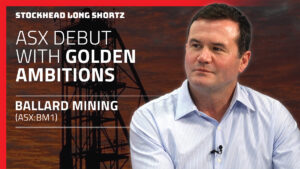ASX stocks capital raising guide: Here’s everything you need to know

Pic: metamorworks / iStock / Getty Images Plus via Getty Images
• Cutting through the capital raising market jargon
• Over $30bn raised by ASX stocks in the first seven months of 2020
• Why directors buying shares in their own companies is a good sign
ASX stocks will often throw around complex terms related to capital raisings that are not always easily understood by investors.
Ever wondered what the difference is between renounceable and non-renounceable, or what a bookbuild is? Rest assured you’re not alone, investors far and wide often struggle to decipher the jargon littered throughout market announcements.
When an ASX-listed company says it’s undertaking a capital raising, it just means it is selling more shares to raise more money — more often than not the shares are sold at a discount to a company’s share price at the time to entice new and existing investors.
Niv Dagan, executive director at boutique investment firm Peak Asset Management, told Stockhead he considered a few key thematics before undertaking a capital raising for a company.
First, what sector is it in – will there be investor appetite?
Second, does management have “skin in the game” and will they participate, or get diluted?
And last, what are the key catalysts post raise?
Dagan says the last one is “extremely important as we want to ensure that following the raise, there is enough ongoing news flow to keep investors engaged”.
Peak Asset Management recently raised funds for heavy mineral sands company MRG Metals (ASX:MRQ) at 0.6c per share.
“Peak had a large position in the company, so knew the asset well and developed a strong rapport with the management team – this is essential,” Dagan noted.
“We liked the fact that management had significant ‘skin in the game’ and on the back of this, we were happy to convert any fees into equity at the same price to ensure that our interests are fully aligned with the company and the investors coming into the raise.”
Here’s some of the more common terms bandied about in capital raising announcements and what they mean.
Types of capital raisings undertaken by ASX stocks
Initial Public Offering (IPO)
First a company needs to get itself listed on a public exchange like the ASX. To do that it needs to undertake an IPO to ensure it has enough cash to meet the listing requirements.
The ASX requires net tangible assets, including cash, of at least $4m for companies with no cash generation or a market cap of $15m.
The market cap of a company is determined by the number of shares it has on issue multiplied by its share price.
Ethiopia-focused gold explorer Megado Gold (ASX:MEG), for example, has completed a $6m IPO at 20c a share (the minimum offer price required to list on the ASX).
On listing it will have 71 million shares on issue, giving it a market value of $14.2m. That of course will change quickly once the shares start trading because the price will fluctuate with buying and selling activity.
To list on the ASX a company needs to have at least 300 non-affiliated shareholders, with each holding at least $2,000 worth of stock — this ensures minimum liquidity so people can trade.
Of those 300 shareholders, at least 20 per cent must be available to the trading public — these are known as ‘free float’ shares.
It is common for firms to undertake pre-IPO offerings where they will sell shares at a lower price than the indicative IPO price, which theoretically guarantees a profit.
These investors, as well as early management and employees with equity ownership in the business can now sell their stakes.
Once a company is listed it’s pretty much a guarantee it is going to need to raise cash again.
In the first seven months of 2020, the amount of capital raised by ASX-listed companies amounted to $32.3bn – well ahead of the $15.8bn raised over the same period of 2019.
There are several different types of capital raisings depending on whether companies are targeting new or existing shareholders and retail or institutional shareholders.
Placement
A placement involves creating new shares and in return for capital, issuing them to selected investors (usually new high net worth investors).
These are the preferred method of raising capital by companies and usually are not announced to the public until complete, although usually before such shares are listed on the ASX.
Placements dilute existing shareholdings, meaning their stake will be reduced and they will be entitled to less profit.
Additionally, these are often sold at a discount to the current share price and may cause it to fall accordingly.
Although in the case of a bullish market, companies have been able to raise cash at a premium.
These are led by institutional investors who are able to put in a large chunk of funds.
High purity alumina (HPA) play FYI Resources (ASX:FYI) raised $2.7m in August via a placement to “sophisticated and professional investors”.
Sophisticated and professional is just a fancy way of describing investors that are more experienced and can suss out a good investment opportunity without needed a long-winded prospectus.
The Corporation Act 2001(Cth) classifies someone as a sophisticated or professional investor if they have a gross personal income over the last two years of at least $250,000 or they have net assets of over $2.5m.
In FYI’s case, Regal Funds Management, which manages around 10 different funds that cater for different types of investors and has billions of dollars of funds under management, participated in the company’s placement.
Share Purchase Plan (SPP)
A share purchase plan (SPP) is often done alongside a placement, but companies can also offer them separately.
An SPP allows existing retail investors to increase their holding and for the company to raise further funds.
They are usually capped at a certain amount per shareholder. Most companies limit shareholders to around $15,000 worth of shares.
However, regulations allow applications of up to $30,000 per shareholder.
An SPP is often done at a discount to the share price at the time to encourage shareholders to top up their holdings.
Rights Issues
Rights issues (sometimes called entitlement offers or share purchase plans) are only offered to existing shareholders. They will be either renounceable or non-renounceable.
A renounceable rights issue allows existing investors to sell or trade their ‘rights’ to buy new shares to other investors whereas a non-renounceable offer does not allow investors to do that.
Once a renounceable rights issue has been announced, shareholders can trade their rights on the market the same way they would trade their shares up until the closing date of the rights issue.
Existing shareholdings will be diluted if a shareholder chooses not to take up their rights, and rights issues are often (but not always) at a lower price than the current share price to entice shareholders to buy more shares in the company.
However, there will be restrictions as to how many shares will be able to be purchased by individual shareholders.
These are always announced before they are conducted and may take one or two months to complete.
Nevertheless, rights issues are a unique opportunity for existing shareholders to ‘top up’ their holdings in the company without being diluted by outsiders as happens in placements.
Underwritten capital raisings
Although companies can fall short of their targets, it is not uncommon for offers to be underwritten – meaning the financial firm leading the offer will agree to buy any shares that are not taken up by investors. Any shares not purchased are referred to as the shortfall.
For example, iron ore explorer Magnetite Mines (ASX:MGT) is undertaking a “partially underwritten” renounceable rights issue of one new share for every four shares already held.
Partially underwritten just means part of the total amount a company is looking to raise will be guaranteed.
Magnetite Mines’ rights issue is underwritten up to $4m of the total $5.56m the company is raising. This means Magnetite Mines is guaranteed it will raise at least $4m.
Underwritten capital raisings are a good sign of the confidence the broker or investment bank has in the strong demand from investors for buying shares in a company.
Specialist pipeline couplings company SRJ Technologies Group (ASX:SRJ) listed on the ASX on September 18 after completing a fully underwritten $8m IPO at 50c a share.
Options
Options basically give investors the right to buy more shares at an agreed price up until a certain date.
These can be given as a bonus to shareholders as part of a rights issue or to new investors taking part in a placement.
For example, Peak Asset Management recently completed a placement for gold and base metals explorer Sabre Resources (ASX:SBR) in which it offered one free attaching option for every two new shares subscribed for.
Dagan said the capital raising, which was done at an issue price of 0.25c, was structured this way to provide investors with a floor.
“The stock would have needed to fall by over 60 per cent in order for our Peak clients to lose money,” he explained.
“We knew that gold was in a hot space and given the enterprise value was so low and its proximity to Penny West, we took advantage of the momentum in the market.”
The Sabre options can be converted into shares at a cost of 0.8c per share up until September 30, 2022.
Cancer biotech Imugene (ASX:IMU), meanwhile, recently secured itself an underwriter for options it has on issue that are due to expire at the end of November.
In Imugene’s case, shareholders can exchange their options for the same number of shares at 2.6c per share before November 30.
With the option exercise now underwritten by Bell Potter, Imugene is guaranteed to raise the full $5.7m from the options that haven’t yet been exercised, even if shareholders choose not to swap them for shares at the agreed price.
Director participation in capital raisings
Another sign of confidence in a company is when directors say they’re going to drop some cash in.
Magnetite has said its directors plan to participate in its rights issue.
Directors with “skin in the game”, as it is commonly referred to, is often something investors look for when choosing to back a company.
It shows directors are willing to put their own cash on the line.
“With junior public companies you’re running a cashflow negative business, so it’s really important that someone in the company is very concerned about the level of cash in the company,” Neil Biddle, who has been building up his stake in gold junior Bardoc Gold (ASX:BDC), told Stockhead.
Biddle, who is a non-executive director, recently dropped in a further $250,000 on market to up his stake in Bardoc to 2.22 per cent. The company’s directors now collectively own nearly 10 per cent.
“I wouldn’t be on a board unless I was a major shareholder because there’s too much risk for the amount of remuneration that gets paid to directors,” he said.
Other complex ASX terms explained
Bookbuild
A bookbuild is undertaken to determine the level of investor interest in buying more shares in a company.
An investment bank or broker is assigned as lead manager to undertake the process. This is also when the issue price of the shares is determined, based on feedback from investors.
Oversubscribed
Oversubscribed just means there is greater investor demand for more shares than what is on offer.
In some cases, companies will anticipate oversubscriptions or accept a certain amount once all applications are in.
In soon-to-be-listed Megado Gold’s case, the company set a minimum of $5m for its IPO but accepted a further $1m in oversubscriptions.
Scaled back
If a company receives too many offers to buy shares, a capital raising may be “scaled back”.
This just means the company is not accepting some or all of the oversubscriptions and will limit the number of shares new investors can buy.
Record date
Companies will specify a “record date” in their respective capital raisings.
This just means anyone on the shareholder register as of the specified date is eligible to participate in the rights issue.
According to trading platform SelfWealth, the T+2 settlement (the date of trade plus two days for the exchange of cash and receipt of shares) for retail investors means an investor must have bought shares in the stock before it enters the trading halt associated with the announcement of the capital raising.
Are capital raisings good news or bad news?
In short, it depends. Companies may be funding long-term expenditure or may just be raising money to keep itself afloat.
Dagan said following the peak of the COVID pandemic in March/April, some companies had to undertake an “extremely dilutive” raise to keep “the lights on”.
“For example, Webjet (ASX:WEB), Flight Centre (ASX:FLT) and Qantas (ASX:QAN) all had to raise millions of dollars at sharp discounts to restore their balance sheets,” he noted.
“More recently, Pointsbet (ASX:PBH) launched a significantly discounted retail entitlement at $6.50 (when the stock was trading at near $13) to bolster its marketing spend, into the US market.”
Cyan Asset Management portfolio manager Dean Fergie says in a really bullish environment companies can see the opportunity to raise capital and they’ll often do it even if they don’t particularly need to.
“Either because they think their share prices are too inflated or because they just see it as a safety mechanism,” he told Stockhead.
“That doesn’t necessarily mean in the short term it’s a bad thing to invest in, because the market is pretty hyped and generally placements are done at a small discount, and it can allow some investors to make a meaningful investment in those companies.”
The medium to long-term situation, however, is a little different for Fergie.
“I like to see a company raising money because they’re using it to acquire another business, expand their existing business or potentially to pay off debt,” he said.
“But if it’s this sort of ‘we just need a bit of working capital’, I think for me, the bottom line is that indicates that the companies think that their shares are too highly valued and so they’re happy to dilute their shareholding in order to get some cash in the bank.”
Stockhead does not provide, endorse or otherwise assume responsibility for any financial product advice contained in this article.
Related Topics
UNLOCK INSIGHTS
Discover the untold stories of emerging ASX stocks.
Daily news and expert analysis, it's free to subscribe.
By proceeding, you confirm you understand that we handle personal information in accordance with our Privacy Policy.








